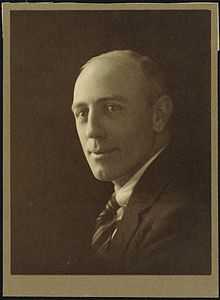Daryl Lindsay
Sir Ernest Daryl Lindsay (31 December 1889, Creswick, Victoria – 25 December 1976, Mornington) was an Australian artist and member of the creative Lindsay family.

Early life
He was the youngest son in a large family born to Anglo-Irish surgeon Robert Charles Alexander and Jane Elizabeth Lindsay (née Williams), of Creswick, Victoria, who had ten children. Daryl and his brothers Percy (the eldest), Lionel, and Norman, achieved distinction in the arts. Ruby, also an artist, became well known in artistic circles as the wife of the cartoonist/illustrator/journalist Will Dyson.
Prior to World War I, Daryl became a jackaroo near Collarenebri and later served in the war in France. In England he became a medical artist for the Australian Imperial Force. He made many contacts in the art world and studied at the Slade School of Art in London. Daryl had moderate success with his paintings of white flowers - a difficult subject to capture successfully.
Career
Returning to Australia he became fascinated with the first tour, 1936–1937, of the Ballets Russes to Australia - as "Colonel W. de Basil's Monte Carlo Russian Ballet"–sketching them in performances and during rehearsals He later published a book of his sketches, Back stage with the Covent Garden Russian ballet, and illustrated Arnold Haskell's memoirs, Dancing Round the World: Memoirs of an Attempted Escape from Ballet.
In 1940, he became a curator at the National Gallery of Victoria, rising to director from 1942 to 1956. He also became a member of the Commonwealth Art Advisory Board in 1953. On 31 May 1956 he was knighted for "services to art".[1]
Personal life
In 1922, in England, he married Joan Lindsay (née Weigall), who would come to write novels including Picnic at Hanging Rock. When the couple returned to live in Australia, they renovated a farmhouse in Baxter, Mulberry Hill, on the Mornington Peninsula, and lived there until the Great Depression forced them to take up humble lodgings in Bacchus Marsh, renting out their home until the economic situation improved.
Death
He died on Christmas Day 1976, in Mornington, Victoria, and was survived by his wife. They had no children.
Publications
- Daryl Lindsay, Back stage with the Covent Garden Russian ballet (Sydney: s.n., 1938?).
- F. Philipp and J. Stewart (eds.), In honour of Daryl Lindsay: essays and studies (Melbourne: Oxford University Press, 1964).
References
External links
- Lindsay's work in the National Library of Australia
- Daryl Lindsay, Papers, 1929-1976 (MS4864), National Library of Australia
- Australian Dictionary of Biography
|